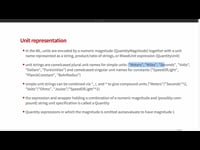This page requires that JavaScript be enabled in your browser.
Learn how »
BoxIDs, Selections and NotebookProgramming, in the FrontEnd
Jason Harris
I review documented and historical ways we can query and manipulate the current selection and then interact, read, write, and change parts, fragments or all of notebooks. I discuss the internal structures Wolfram Research staff use for advanced control of Selections. I also cover existing methods for locating structures and standard applications of BoxIDs and Dynamic Locations.
Thanks for your feedback.
Channels: Technology Conference
1311 videos match your search.
 |
Eric Weisstein & Michael Trott |
 |
Riccardo Di Virgilio Come to a hands-on session with the developers of the ExternalEvaluate framework. Bring your questions, suggestions, ideas and problems while working with external languages. Don't have a specific question? Then ... |
 |
Todd Gayley,Bob Sandheinrich,Bradley Ashby,Connor Gray ,Richard Hennigan , Brian Van Vertloo |
 |
Jordan Hasler Modern learning spaces combine computation, visualization and concept exploration. Wolfram|Alpha Notebook Edition facilitates all three, teaching Wolfram Language along the way. This talk demonstrates the breadth and depth of ... |
 |
Paige Vigliarolo and Treyton Jansen Learn about book publishing using Wolfram Language. We'll explain our various programs for supporting authors working to publish both with Wolfram Media and with other publishers. A brief demonstration of ... |
 |
Mads (Mohammad) Bahrami, John Mcnally and Yi Yin |
 |
Rory Foulger Our programs push students to deeply engage in their subject area while becoming resilient and self-motivated computational thinkers. Educators, parents, and students are welcome to come and explore the intentional ... |
 |
Giulio Alessandrini, Timothee Verdier, Bob Sandheinrich , Christopher Wolfram, Avery Davis and Connor Gray |
 |
Giulio Alessandrini, Jesse Galef |
 |
Carlo Barbieri The objective of this workshop is getting you started with the main concepts of working with Relational Databases through the Entity framework in the Wolfram Language. |
 |
Bart ter Haar Romeny StyleGAN (Style Generative Adversarial Network) is a type of generative model capable of generating realistic images. It is not trivial to explain what happens inside. In this computational essay, I ... |